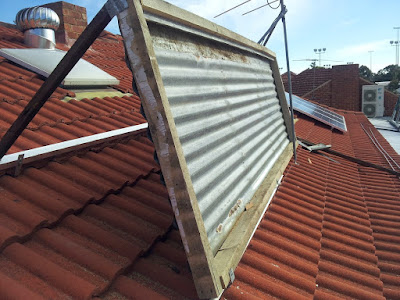How do roofers find leaks in the roof?
When you find leaks in your roof, you tend to think about how the roofing contractor might find the leaks and you start thinking like a roofing contractor. Let’s try to understand that how roof maintenance contractors try to find the leaks in the roof.
The question you need to ask yourself about the leak: When you see a roof leak
ask yourself about what is located just above the particular area of the
leaking roof. You may realize that the leakage area is below the area where
either the sink, toilet, bath, or shower are
located. If this is the case then, the leakage could also be due to the broken
pipe, leakage in the toilet base or some kind of blockage of the water. If this
is the issue, then it can easily be fixed by calling a plumber. There is no
need to call a roofer to solve the problem. If that is not the issue then the
next thing to do...
The roofers further also look under the sheathing board. They
can see the nails and also check if there is rust. Sometimes they can see the
actual frost on the sheathing. In both cases, there could be rust on the nails.
Here we are looking for frost, condensation, mold, or rust. So it means that it
is actually an issue of internal humidity and the issue with the ventilation.
The aim of the roofer here would be to reduce the humidity and check the
moisture ventilation in the attic.
At times, it is just a humidity adjustment issue, and it is
important to always turn the vents on after the shower. However, if this issue
is an ongoing issue then insulation replacement or mold remediation could be
required.
How to detect if it is a Roof Leak?: If there
is no moisture or condensation in the attic then it could be the actual roof
leak. The easiest way to check it is by observing the roof from the attic by
looking for the entry point of the water during rain. However, if there is no
rain forecast near then, it can still be tested by the roofing contractor. In
this case, one of the roofing contractors sits on the attic and the other one
sprays the water at the suspected area from the roof to identify the leakage.
Most of the time, the problem could be a hole in the shingles or faulty
flashing. These issues can be fixed or the roof may be needed to replace in the
long run.





Comments
Post a Comment